

The bifocal lens, also called Franklin and split bifocal, was first invented by Benjamin Franklin in the 18th century. Multifocal lenses are commonly used to accommodate Presbyopia patients. The bifocal is the most basic multifocal lens. This lens consists of two prescriptions; usually a distance prescription with a reading addition placed in a lower segment. Since the basic split bifocal design, the bifocal has adapted many different lens designs to accommodate different preferences. Some include the Flat Tops, Round Segments, Curve Tops, Executives, Ultex and the Blended Bifocal. Through the evolution of the bifocal there have been many styles added and discontinued. Below you will find several different types of bifocal lenses along with characteristics to accommodate different lifestyles and needs.

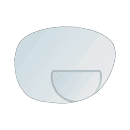
The flat top is also called the style multifocal lens. This design has a segment width that ranges from 25mm to 45mm. The Flat Top is regarded as one of the easiest multifocal lenses to adapt to, hence it is the most commonly used bifocal (FT 28mm is referred to as the standard size). This lens style is also one of the most readily available in almost any medium and including comfort lenses (ie. Polarized and Transition). The Flat Top utilizes the complete width of the segment giving the user a definitive reading and distance transition
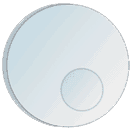
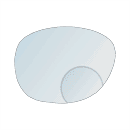
This lens is also called a CFR (Croma Free Round - In reference to the glass fused lenses), and a kryptok lens. This lens has been offered in widths ranges including 22, 25 and 28mm, however some sizes and mediums in this lens have been phased out and are no longer available. This lens gives the user a narrower initial reading range up top, because of its round top.
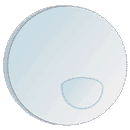
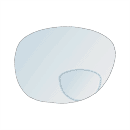
Also called the C-Style Segment, this lens has been offered in widths of 28,35 and 45mm. Like the round top some sizes and mediums in this lens have been phased out and are no longer available. Since the Flat Top was initially patented. it has been said that the curve top was a way to reach the bifocal market without consequence to patent infringement. This design's rounded corners on the bifocal segment have been promoted to enhance peripheral vision.
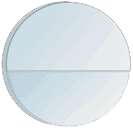
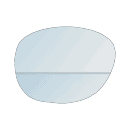
This lens is the closest to the original bifocal. The Executive lens is also know as the Franklin, Dual Lens, Diplomat, Bi-Field and Full Segment. This lens is often recommended as an occupational lens for patients involved with a lot of reading. This style segment offers the widest reading range of any of the bifocals for obvious reasons.
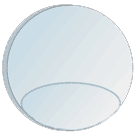
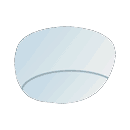
The Ultex lens has been phased out in many mediums. This lens is also called the Baseball Segment and CX. The segment usually measures 38mm in width. The Ultex lens is another recommended occupational lens offering a vast reading range. The wide round segment allows for more peripheral vision.
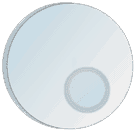
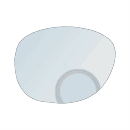
The Blended bifocal is also called the Invisible Bifocal, Seamless, Blended 28 and the Younger. Irvin Rips is credited with inventing the first blended multifocal lens in 1955 creating a younger aesthetic look, which led him to launch Younger Optics. The segment width of the Blended bifocal is 28mm. This lens design is Cosmetically the best looking lens of all the bifocals, showing virtually no sign of a segment. However, there is a 1 to 2mm blending range between the segment power and the lens prescription. This blending range has a distorted perspective that can prove to be non-adaptable for some patients. However, it is also a lens used with patients that are non-adaptive to progressive lenses.